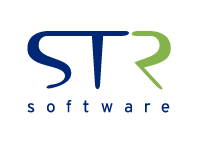Key to implementing an effective preventive maintenance program is the use of CMMS software like Oracle eAM or JDE E1 CAM. However, inefficient printing (and re-printing) of work orders can throw a wrench into your process and waste valuable time and lead to inaccurate or outdated maintenance instructions making it into the field.
Here are 3 benefits you can expect from automating your preventive maintenance work order printing.
Benefit 1: Faster work order printing leads to increased wrench time
Maintenance planners and schedulers who prepare work orders manually know this scenario all too well: Your work orders are ready for printing – complete with the corresponding safety and work instructions. However, your CMMS software does not allow the automatic printing of the entire work order package. Instead, the work orders and each attachment needs to be opened and printed individually. This process becomes especially inefficient the more work order packages need to be processed. Automating the process saves valuable time for planner/schedulers and maintenance technicians alike.
The sooner work orders leave the maintenance planner’s office, the sooner they can be put to good use in the field. Incomplete or outdated work order packages can cost maintenance technicians valuable time if they have to trek back to the office to print missing attachments or reprint updated versions. By automating the work order printing process, maintenance workers always get the right work order package and can spend more time with tools in hand taking care of your equipment.
Currently, the industry average for workforce wrench time sits between 25 and 35 percent. A streamlined planning, scheduling and work order preparation process can double this rate to over 50 percent.
This is a significant efficiency boost: doubling your wrench time means that double the maintenance work can get done with the same staff. As a result, your better maintained equipment will require fewer unplanned or emergency repairs, which in turn frees up your maintenance crew to respond faster to new challenges.
This also leads to higher work efficiency inside the planner’s office. The ability to update work order attachments quickly and easily without required input from maintenance workers in the field frees up valuable time to improve both wrench time and the exploration of even more efficient maintenance approaches. For example, planner/schedulers will be able to explore predictive and proactive maintenance models. These rely on the continuous monitoring of equipment and environmental conditions as early indicators of imminent equipment failure. Automated work order printing solutions make it easy to update or add supplementary maintenance steps to attachments on the fly. With an automated process, you know that the new steps will be executed by maintenance technicians the very next time the work order is printed. For example, adding important predictive failure measurements such as monitoring engine temperature or lubricant levels becomes as easy as opening the version controlled attachment, updating the procedures and clicking save.
Benefit 2: Version-controlled work order packages ensure improved accuracy and maintenance efficiency
Improving the speed at which your work orders are generated is only half the battle: accuracy is another key component of an effective preventive maintenance program. Work orders typically rely on attachments with detailed instructions on how to best execute the maintenance work. When these instructions change, and outdated printouts with outdated or incorrect instructions are circulated, it can significantly affect maintenance work efficiency. As a result, work may not be carried out correctly or workers may waste time coming in again to pick up an updated work order version. By automating work order printing with version-controlled attachments, you can ensure faster, more accurate maintenance work.
Benefit 3: Higher accuracy and improved wrench time improve workplace safety
With better equipment and facility maintenance, you not only improve efficiency and productivity, but also create a safer workplace. Automating your preventive maintenance work order printing can ensure that your workers have the newest health and safety instructions to keep them safe in the field. It can also help guarantee that your operations remain in compliance with local safety and operating regulations.
A preventive maintenance program, enabled in part through the efficiencies created by automated maintenance work order printing, helps reduce or eliminate workplace injuries, resulting workflow disruptions and associated significant costs such as:
- Medical costs
- Lost productivity
- Effect on employee morale
- Regulatory fines and insurance rate hikes
- Equipment and facility damage
In 2012, the annual cost of known workplace fatalities cost the US industry $40 billion. If non-fatal injuries are also taken into account, the cost due to lost productivity is significantly higher as nearly 31 percent of non-fatal injuries and illnesses required workers to take time off work.
How STR Software Can Help
In order to help you capitalize on these benefits of an automated preventive maintenance work order printing process, we developed AventX to allow you to:
- Automate your maintenance work order printing to save time. AventX reduces the work order package creation process with 90 percent fewer clicks and improved accuracy. This leads directly to increased wrench time.
- Ensure deployment of version-controlled work order packages. Improve workplace safety and maintenance work efficiency by ensuring the most up-to-date safety attachments and maintenance work instructions are printed correctly the first time.
- Easily update maintenance work order packages without bothering your maintenance crew. Simple changes or additions to work orders or attachments won’t be missed with automated work order printing. New attachment versions are automatically added to all relevant work order packages waiting to be printed – even if these were prepared in advance. Not having to bother maintenance workers to ensure that they have the newest version of the work order package and being able to trust that only the newest attachment versions get printed saves valuable time in the office and in the field. This not only increases wrench time, but also allows the easy implementation of predictive and proactive maintenance approaches and procedures.
What’s Next?
- Learn more about printing work orders with attachments from Oracle eAM or work orders with media object attachments from JDE E1 CAM.
- Find out how Barrick Gold Australia benefited from automatically printed, collated, and stapled work order packages using AventX from this case study.




![Rollup of Product Updates [Winter 2025; v25.1]](https://www.strsoftware.com/wp-content/uploads/2023/02/Feature_Image_ProductUpdate_Wave-510x382.png)
